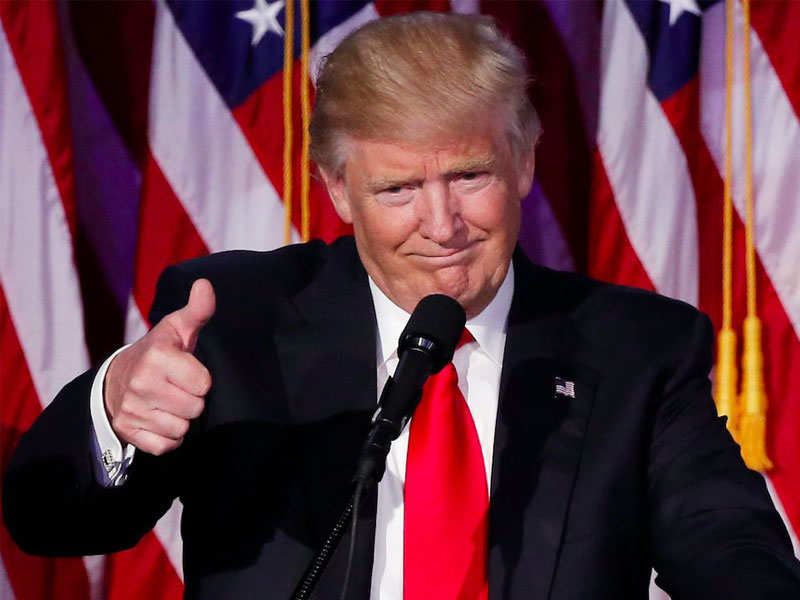 2016 will surely go down as a watershed year in more ways than one. Violence across the world remains unabated; war continues to ravage Syria; Iraq and Afghanistan are no closer to returning to normalcy; the coup attempt in Turkey and the subsequent consolidation of power in that country promises to have a long lasting impact - the year had been eventful to say the least. But among all these, the two events (interestingly both delivered democratically) that have the potential to radically reshape the world that we live in are
2016 will surely go down as a watershed year in more ways than one. Violence across the world remains unabated; war continues to ravage Syria; Iraq and Afghanistan are no closer to returning to normalcy; the coup attempt in Turkey and the subsequent consolidation of power in that country promises to have a long lasting impact - the year had been eventful to say the least. But among all these, the two events (interestingly both delivered democratically) that have the potential to radically reshape the world that we live in are There are certain similarities between the two events, not least being that both were thought to be unlikely before they actually materialized. In both cases the key architects and their supporters have envisaged building walls around their respective countries - in one case literally. In both cases, a fear psychosis gripped the majority group and in both cases the majority of the young voted against the eventual outcomes.
A lot has been said about how
In this context it has to be noted the group that is most aggrieved is probably not the poorest of the lot. Clinton received more votes than Trump from those whose income is less than $50,000 per annum. The discontent is highest among the group which feels their relative position is sliding from a position of privilege. They feel that this privilege is eroding, within local surroundings, but more so in the global context where, they might feel, the emerging middle class in countries like China and India is catching up, or even exceeding their living standards. Possibly that is why the rants and rhetoric of Trump against trade, against China and against “those who are stealing jobs” resonated with these people. Trump is the straw they want to hold onto to prevent this ‘perceived privilege’ from eroding – forgetting all the while that privilege is earned and not a right!
This also brings us to the issue of immigration. Is the influx of immigrants really a threat to this group? To understand this it is instructive to look at the stretch between Philadelphia and Minneapolis, the so-called rust belt, encompassing a large part of the Upper Midwest. This is here that the election was won – and lost. This was supposed to be the blue wall – Pennsylvania, Michigan, Wisconsin, and Minnesota along with Ohio. To understand how confident the Clinton campaign was about this region, just look at how much they spent in local media purchases in Wisconsin – zero. Eventually Trump won all the states except Minnesota, where Clinton barely hung on to a narrow victory. The county wise map is almost an unbroken red across for this region, with specs of blue near the big cities. Interestingly, these are also states with relatively low levels of immigration. The percentage of the population in this region of those born outside the US ranges from 4.2% to 7.8% in 2014 (the highest in Minnesota, 7.8%, which Clinton won). Compare this with California – 27.1%, New York – 22.6%, or even, Nevada – 19.4%, again all states where Clinton has won. So, it cannot be that in these states, which flipped, people felt displaced because of a huge surge in immigration, which made them feel like a stranger in their own neighborhoods.
This region did see some job loss, but
What now? This is a particularly difficult question given the fickleness of Trump’s position, and perceived ignorance on issues of national and international importance. Not only from the campaign proclamations, but also observing Trump the businessperson, a certain degree of restlessness is observed. His clear lack of interest in anything but the immediate gains might lead to frequent change in policies and no long term commitment to any relationship. This means we should brace for a lot of volatility in the US and also the rest of the world. India has grown closer to US basis new geo-strategic compulsions and mutual interests. This policy has to be reconsidered. The other fallout can come from fructification of Trump’s xenophobic and anti-immigration policies, unless moderated by some sane voice within the government, which at this point looks quite improbable. History and experience shows that an election won from a platform which is divisive and based on exclusion, will sharpen social divisions notwithstanding other gains. As a result conflicts emerge and progress halts. However, history is but an imperfect guide to the future and let us hope our fears remain unfounded.
(About the Author: This article has been contributed by Partha Chatterjee, the head of the department, Economics, Shiv Nadar University.)
